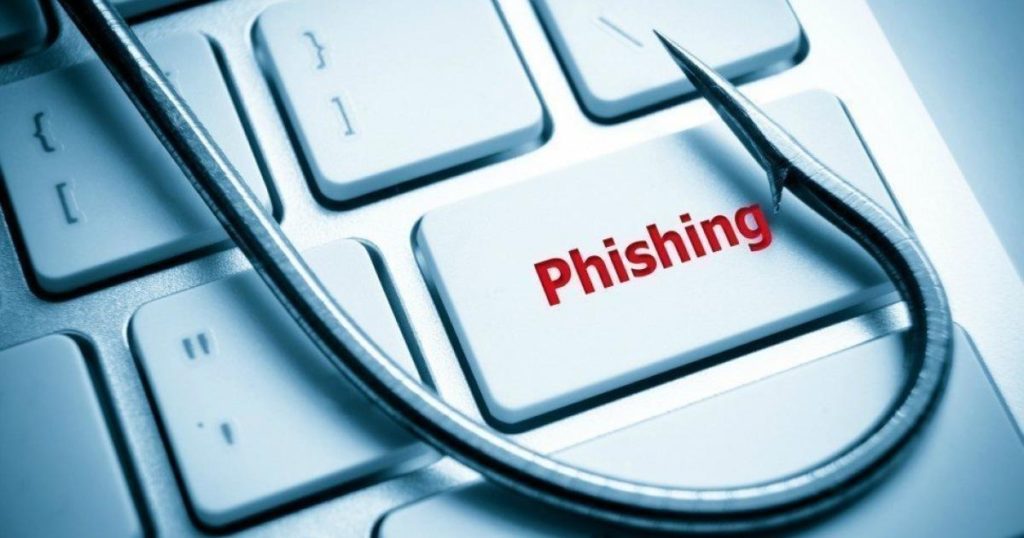We receive junk mail every day. You will probably wonder how many emails are phishing emails out of the total spam that you receive.
These are emails that you may unknowingly open and give out your valuable data. There are billions of phishing emails that get sent out every day.
Phishing is a very prominent type of hacking that is now several decades old and is becoming bigger and bigger on the internet.
How many phishing emails are sent daily in 2024? Let’s take a look at the statistics.
Post Contents
- 1 Quick Email Phishing Statistics in 2024
- 2 Definition of Phishing
- 3 The Advanced Email Technology of Today
- 4 Forms of Cyber-attacks
- 5 How Do Phishing Emails Appear?
- 6 How Many Phishing Emails Are Sent Daily in 2024?
- 7 Difference Between Spam and Phishing
- 8 The Role of the Gmail Protection Service
- 9 Percentage of Cyber-attacks Through Emails
- 10 Number of Phishing Messages
- 11 Phishing Attacks and Data Breaches
- 12 Phishing in the United States
- 13 Interesting Phishing Statistics
- 14 Conclusion
Quick Email Phishing Statistics in 2024
- Every day 3.4 billion phishing emails are sent.
- In 2021 almost 50% of emails sent were phishing emails.
- Google blocks over 100 million phishing emails daily through their Gmail Protection Service.
- Cyber-attacks on individuals through emails amount to about 94% of all cyber-attacks.
- Each month the number of new phishing websites amounts to roughly 1,385 million.
- 90% of the data breaches in the world are caused by phishing.
- The country that faces the most phishing attacks is the United States.
- The most likely victims of phishing emails are millennials and Gen-Zers.
Definition of Phishing
Phishing can best be described as a social engineering attack through which your sensitive information gets compromised by the malware that gets installed in your system.
This malware can reach your devices or computer in many ways.
But the most popular method of attacking that cyber-criminals use is through email. They send emails containing links to phishing malware.
On opening the email and clicking on the link you allow the malware to download and start working on your device or system.
With the widespread increase in email communication, phishing emails are also increasing proportionately.
The Advanced Email Technology of Today
Once upon a time, we used to receive all our communication through snail mail where the postman would deliver our letters every day.
We would manually remove the junk mail, tear up the unwanted letters and throw them away.
Today, email technology has become very advanced. We send letters to each other in a similar format as we did in the yesteryears but electronically.
The result is these letters or communications if you may, are much faster, easier, and with multiple advantages.
The COVID-19 pandemic has brought most of us online, even those who were not frequent internet users.
The major population of the world working remotely has opened the doors to cyber-attacks.
Forms of Cyber-attacks
One of the chief forms of cyber-attacks is phishing. A phishing email usually comes in the form of a fraudulent message, rather like clickbait.
It motivates the receiver to click on the link that releases the malware into the system.
Also, phishing emails impersonate people and organizations asking the victim for their details.
The victim releases confidential information like user IDs, passwords, and one-time passwords (OTPs).
The phisher uses this information to commit fraud against the individual or even worse, to commit crimes in the name of the individual.
How Do Phishing Emails Appear?

Usually, phishing emails affect people surfing the net. These fraudsters are nothing but confidence tricksters who convince the victim to click on a link or confirm an account.
Once the person clicks on a link or reveals their credentials like a user ID, OTPs, and so on, fraudsters get access to all the confidential details of the victim.
The fraudsters can now use the victim’s account details as they please. These Phishing emails can also enable a fraudster to enable account takeovers and commit identity theft.
So, the number of phishing emails sent every day is at a critical figure and anyone online is susceptible to such phishing attacks.
If you look at a phishing email, it may seem legit. It may resemble a regular email sent by an existing company. These fraudsters often impersonate well-known companies and brands.
Although they make the email look like it came from a well-known company, it is not so. The email has been sent by an individual for the sole purpose of obtaining your sensitive and confidential data and using it to defraud you.
Today there is a lot of awareness regarding phishing. Nevertheless, it is more rampant than ever on the internet today.
Some of the statistics about phishing emails will make you realize how serious this problem is.
How Many Phishing Emails Are Sent Daily in 2024?
Today, in 2024, we are looking at about 3.4 billion phishing emails being sent daily worldwide. It is a huge number and expected to increase even by the end of the year.
Also, the projection is that cyber attackers will send over a trillion phishing emails in total in 2022.
Difference Between Spam and Phishing
We use many terms related to the internet and emails loosely and there is a bit of overlap between the meaning of several terms.
Two words that you hear commonly are spamming and phishing. Let’s take a close look at the difference between the two terms:
Spamming
Spam emails are messages that you receive in your inbox that have no relevance to your requirements or your user profile.
Spam email can be anything from offers on products being sold on the internet to charities asking for money.
Although most spam emails add no value to your needs, they are harmless and you can simply delete them without opening them.
Phishing
A phishing email is a malicious email intended to cause damage and incur losses to the receiver.
A phishing email also comes under the category of spam email but it can harm you beyond all imagination.
If created cleverly, a phishing email can harvest enough of your confidential data to defraud you of all the money you have in your bank account.
A phishing email can also provide the defrauder with sufficient information to take over your bank account or even assume your identity which is commonly known as identity theft.
Identity theft is the worst form of cyber-crime because the fraudsters clone your very identity and start acting on your behalf on your bank accounts, credit cards, and all other entities where you might be registered online.
Therefore, the difference between phishing and spamming is that all spam emails are not phishing emails but all phishing emails are spam.
It’s very important to know this difference.
The Role of the Gmail Protection Service
The COVID-19 pandemic ushered in many difficulties for individuals and businesses in the way they operate online.
Security is a prime concern and phishing emails are a major threat to individuals and organizations.
Scamsters experienced a great advantage during the pandemic days when everything was uncertain and there was a lot of chaos in the world, offline and online.
The volume of emails being sent increased considerably during this time.
With the increased online presence of individuals and companies, fraudsters found increased opportunities to create cyber-crime.
Today there are over 1.8 billion Gmail users and the number of businesses that use Google products is up to 5 million.
The reason that Gmail has gained popularity among users is because of its default security protection features.
According to Google, it blocks over 100 million phishing emails daily through its Gmail Protection Service.
Google also agrees that it is the COVID-19 pandemic that has encouraged scammers to expand their operations, giving them ample opportunity to cheat people and organizations.
Google says that it has met with 99.9% success in blocking spam emails. This number also includes phishing emails.
Percentage of Cyber-attacks Through Emails
Surveys have revealed that 90% of the malware being generated in the world comes with emails.
This figure demonstrates to us how serious the problem is and how dangerous these emails can be concerning cyber-attacks.
Office doc files deliver 45% of the malware and windows apps share 26% of the total number of malware emails being delivered.
The encouraging news is that the number of phishing emails is reducing.
Today only one out of three IT professionals saw the number of cyber-attacks increasing, particularly with communication channels.
When we talk about communication channels, we allude to video conferencing channels that occupy 44% of cyber-attacks, with cloud-based file-sharing platforms at 40%, employee messaging systems at 40%, and text messaging and SMS being the lowest at 36%.
Number of Phishing Messages
As we mentioned, every month about 1,385 million web pages are newly set up solely for fraudulent activities.
Individuals and businesses find it difficult to detect all these phishing attacks as they are becoming more sophisticated.
Therefore, the number of phishing messages that are sent out daily can vary.
Nowadays, these phishing websites are becoming so realistic that effectively combating cyber-attacks is a near-impossible task.
Once a phishing website has been set up, the scamsters find it easy to lure their victims into providing their sensitive data.
It is very easy to fall into the vicious trap of these cyber-attackers because the website looks so authentic.
Phishing Attacks and Data Breaches
A data breach is a term that is becoming more and more familiar to internet users. A data breach is nothing but a security violation of sensitive data.
Under certain conditions, sensitive and confidential data gets compromised and is viewed, copied, shared, or used by unauthorized persons.
If adequate security measures are not taken in personal and office systems, it can result in a security breach.
In recent years, major banks in the world have experienced security breaches where the personal data of millions of customers got compromised.
Financial organizations were fined billions of dollars in fines to governmental regulatory bodies for these data breaches.
Most breaches are caused by phishing and the percentage of these breaches is up to 90%.
It is very common for hackers to collect sensitive data from users’ accounts through phishing and selling the data to others who cause further damage.
Phishing in the United States
In 2019, there were 3.9 billion email users and it increased to 4.1 billion in 2021. Projections indicate that the number of users in 2025 will be 4.6 billion.
Not only does the United States have the largest number of email users in the world but they also have a proportionate number of phishing emails sent per day.
In October 2021, 8.6 billion spam emails were sent in a single day.
After the United States, China ranks second in spam emails followed by the Russian Federation, Brazil, and India.
Interesting Phishing Statistics

There is a common misconception that older people who are unfamiliar with new technologies are the ones who easily get scammed online.
But surprisingly, it is the younger generation, particularly millennials and Gen Z individuals who are more prone to getting ripped off online than the older generation.
According to recent studies, 23% of Gen-Z individuals have been disadvantaged as a result of email scams.
An interesting fact about individuals’ user patterns is that a surprising number of people check their spam inbox daily despite repeated warnings that clicking on unknown links and spam emails can be quite dangerous.
A whopping 58% of email users have the habit of checking spam daily.
There is a misconception that the built-in security filters in systems and those of email providers will take care of dangerous malware and phishing software.
But the fact is that none of these security filters are 100% failsafe from the clever manipulations of cyber-attackers.
You don’t need to check your spam unless you are looking for a particular email that a sender insists that they sent.
This could be a rare occasion. But it does not mean that you have to go regularly into your spam folder and dig around.
Another shocking statistic is that out of the total number of employees in business establishments, 20% are likely to click on an unknown link.
It is possible to accidentally click on a link while moving your mouse over text.
Phishing attacks are extremely sensitive and sophisticated. They react to a click on a link instantaneously.
In a survey, 95% of business establishments stated that they provide adequate training to their employees regarding the dangers of phishing and cyber security.
Despite this, 20% percent of business employees have admitted to clicking on unknown links in spam folders.
It proves that any amount of training is not enough in the backdrop of a phishing attack.
However, many business establishments provide very powerful anti-malware with firewalls and antiviruses.
In addition, they closely monitor their employees’ activities. All these measures can reduce the risk of damage through phishing emails.
Conclusion
Today, most of what we do is somehow connected to the internet. Most of us are engaged in exchanging information online throughout the day.
When phishing emails are going around, it is very easy to become a victim of phishing through them.
Even though the number of phishing emails seems to be declining, it is important to be aware and avoid falling into these traps. We have covered how many phishing emails are sent daily in 2024, and the number is still massive.
Even though there is a decline in cyber-attacks, fraudsters will always find more sophisticated ways and means of scamming unsuspecting users.
Today, phishers rely on effectiveness and quality rather than volumes. Organizations and individuals need to use sufficient security, filters, and firewalls.
People also have to do their bit in the fight against cyber-crime by taking adequate measures.
Firewalls and anti-virus software may not protect you all the time. You need to follow strict adherence to data protection policies while online with systems and devices.
Even though we have stated here that the number of phishing emails is declining, when you consider the sheer amount of phishing emails sent daily, the number is over three billion, which is an overwhelming number.
It is not yet time to relax. We have to be on our guard constantly as prevention is better than cure.






























